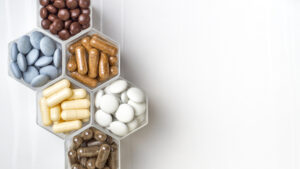During a viral infection, our body tends to consume a large amount of NADNAD (Nicotinamide adenindinucleotide ) is a co-enzyme essential to the metabolism of the cell, intervening in the activity of more than 200 enzyme proteins that govern the energy process of the cell itself. With age, one becomes deficient in this co-enzyme by altering cell catabolism. (Nicotinamide Adenine Dinucleotide), risking a deficiency of this substance and, as a consequence, the onset of metabolic dysfunction and many other problems. In fact, NAD performs many functions and in particular has a central role in cellular metabolism and immune system functioning. This is why some research groups are investigating whether replenishing NAD through nutraceuticals, such as CellFasting from SoLongevity, can support the body to fight off an ongoing viral infection. And the results of a new study, conducted on a total of nearly 400 patients with mild to moderate forms of Covid-19, seem to indicate just that: patients treated with supplements containing precursors of the glutathione (another powerful health ally,) and NAD were cured faster on average than those treated only with antiviral drugs. Let’s look at the details of the study and also exactly what NAD is used for.
What is NAD?
NAD is involved in the activity of more than 200 enzyme proteins (that is why it is part of a class of molecules called co-enzymes) that regulate the biochemical processes underlying energy production. In addition, NAD plays an important role in DNA repair, and, as anticipated, in immune cell function. In our bodies it can be found in its oxidized form (NAD+, which is the useful from a health point of view) or reduced form (NADH).
Why do NAD+ levels drop during a viral infection?
Somewhat as in aging, NAD+ levels tend to decline in the course of viral infection. This occurs as a result of processes triggered by the inflammatory response that our body puts in place to fight the infection. Not only that, Sars-CoV-2, for example, appears to be able to activate the transcription of genes that lead to the consumption of high amounts of NAD+. In essence, therefore, during a viral infection, NAD+ consumption increases due to both the immune response and the activity of the virus itself.
The study
A group of researchers from the University of Health Sciences Istanbul developed two follow-up studies, one phase 2 and one phase 3, involving 397 patients (93 and 304, respectively) with mild to moderate forms of Covid-19. For the phase 3 study, the researchers divided the 304 participants into two groups: 75 patients constituted the control group, which was given classic antiviral therapy and a placebo for a period of two weeks; the remaining 229 participants, on the other hand, were also given a combination of glutathione and NAD precursors for the same period of time and in conjunction with the antiviral therapy (carnitine, N-acetylcysteine, nicotinamide riboside and serine). The results, published in Advanced Science, showed that patients treated not only with antivirals but also with glutathione and NAD supplements took, on average, about three days less to fully recover from the infection than the control group.
The NAD booster supplement
SoLongevity has developed CellFasting, based on the GluReNAD formula: a nutraceuticalNutraceutical is a syncratic neologism from "nutrition" and "pharmaceutical" coined by Stephen de Felice in 1989. Nutraceuticals are those nutrients contained in foods that have beneficial effects on health, their effectiveness has been proven by clinical trials. that can replenish the levels of NAD+ and glutathione precisely by providing their precursors, so that the body can “build” these molecules on its own in the quantities needed to restore a balance in oxidative stress, thus also avoiding the risk of counterproductive excesses.







